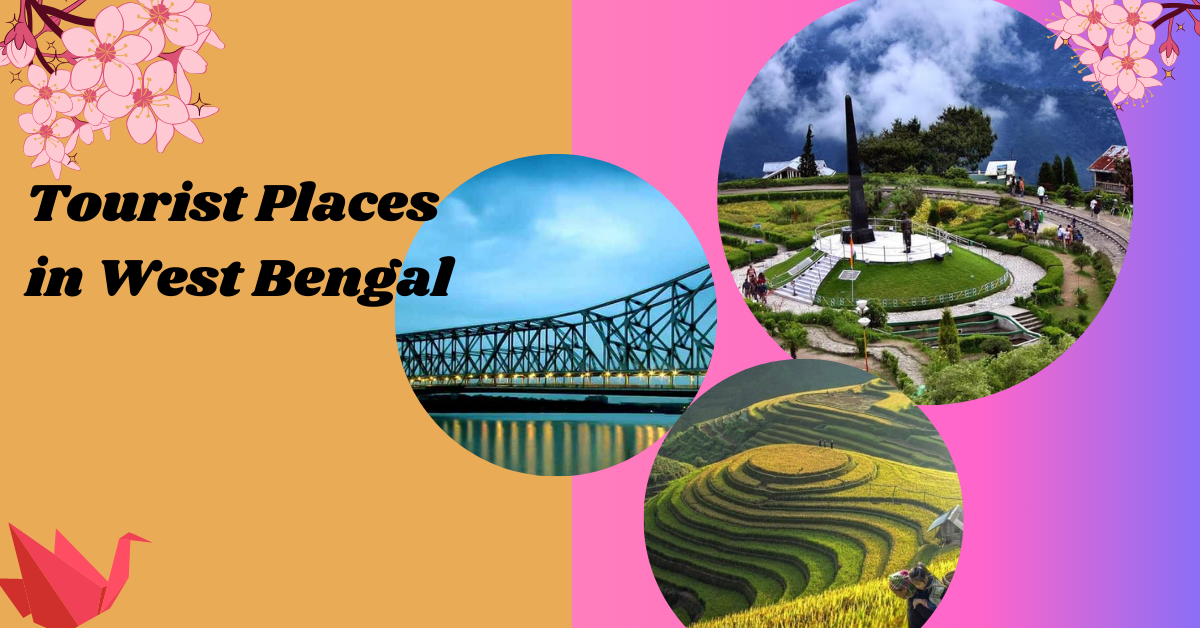Nestled in the eastern part of India, West Bengal is a state renowned for its rich cultural heritage, literary prowess, and diverse landscapes. The top tourist places in West Bengal not only showcase the state’s historical significance but also play a pivotal role in shaping the societal ethos. In this blog post, we will embark on a journey through the best and famous tourist places in West Bengal, exploring their relevance, evolution, and potential future developments.

Relevance and Cultural Significance:
- Victoria Memorial, Kolkata: The iconic Victoria Memorial in Kolkata stands as a symbol of the city’s colonial past and architectural grandeur. It not only attracts history enthusiasts but also serves as a cultural hub, hosting events that celebrate the city’s artistic and literary heritage.
- Darjeeling: Darjeeling, with its lush tea gardens and panoramic views of the Himalayas, holds immense cultural significance. The town’s colonial charm and the cultivation of the world-famous Darjeeling tea contribute to its relevance as a cultural and economic center.
- Sundarbans: The Sundarbans, a UNESCO World Heritage Site, is not only a natural marvel but also deeply intertwined with the cultural fabric of West Bengal. The mangrove forests are home to the indigenous Sundarbans people, and their unique way of life reflects the delicate balance between nature and society.
Evolution of Tourist Places:
- Dakshineswar Kali Temple: The Dakshineswar Kali Temple, situated on the banks of the Hooghly River, has evolved into a major pilgrimage site. The temple’s architectural splendor and religious significance draw devotees and tourists alike, contributing to the spiritual vibrancy of Kolkata.
- Shantiniketan: Shantiniketan, founded by Rabindranath Tagore, has evolved into an intellectual and artistic haven. The Visva-Bharati University, established by Tagore, continues to be a center for education, arts, and cultural exchange, attracting students and scholars from across the globe.
- Howrah Bridge, Kolkata: The Howrah Bridge, an engineering marvel, has evolved into an iconic symbol of Kolkata. The bridge’s role as a crucial transportation link and its cultural significance are testament to Kolkata’s evolution as a modern metropolis.
Impact on Society:
- Cultural Renaissance: West Bengal’s tourist places have been instrumental in fostering a cultural renaissance. Festivals, literary events, and art exhibitions celebrate the state’s rich heritage, contributing to a renewed sense of pride and identity among the local population.
- Economic Growth: The tourism industry in West Bengal is a significant contributor to economic growth. The influx of visitors supports local businesses, including hospitality, transportation, and handicrafts, creating employment opportunities and bolstering the region’s economy.
- Preservation of Heritage: The preservation of historical and cultural heritage is a central focus in West Bengal. Efforts to maintain landmarks, restore heritage buildings, and promote traditional arts and crafts contribute to the state’s commitment to safeguarding its cultural legacy.
Potential Future Developments:
- Sustainable Tourism Practices: Future developments should prioritize sustainable tourism practices. Responsible management of historical sites, conservation efforts, and the implementation of eco-friendly initiatives can ensure the long-term viability of West Bengal’s cultural and natural landmarks.
- Digital Integration for Enhanced Experiences: Leveraging technology for tourism can enhance visitor experiences. Digital platforms, virtual reality tours, and interactive exhibits can provide a more immersive understanding of West Bengal’s history, culture, and natural beauty.
- Community Engagement and Skill Development: In the future, there could be increased emphasis on community engagement through tourism. Involving local communities in the management and promotion of tourist places can ensure that the benefits of tourism are shared, fostering a sense of ownership and pride. Skill development programs can equip locals with the necessary tools to actively participate in the tourism industry.
Conclusion:
West Bengal’s best and famous tourist places are not just physical landmarks; they are cultural narratives, architectural wonders, and natural treasures that define the state’s identity. As we marvel at the Victoria Memorial, sip Darjeeling tea in the misty hills, or cruise through the Sundarbans, it is clear that these landmarks are woven into West Bengal’s societal fabric. Looking ahead, sustainable practices, technological integration, and community engagement can further elevate West Bengal as a cultural and historical treasure trove, where tradition and modernity coexist harmoniously. Let us celebrate the diversity, embrace the narratives, and contribute to a legacy that continues to unfold in the vibrant tapestry of West Bengal.

Best and Famous 37 Tourist Places List in India
| Zone | States | |||
| North | Jammu & Kashmir | Haryana | Delhi
Rajasthan |
Punjab |
| Central | Uttar Pradesh | Madhya Pradesh | Chhattisgarh | Uttarakhand |
| East | Bihar
Sikkim |
Odisha | Jharkhand | West Bengal |
| West | Gujarat
Goa |
Daman Diu | Maharashtra | Dadra Nagar Haveli |
| South | Karnataka
Tamil Nadu |
Kerala
Puducherry |
Andhra Pradesh
Andaman Nicobar |
Telangana
Lakshadweep |
| Northeast | Manipur
Meghalaya |
Mizoram
Assam |
Tripura
Arunachal Pradesh |
Nagaland |
| Southeastern | Ladakh | |||
